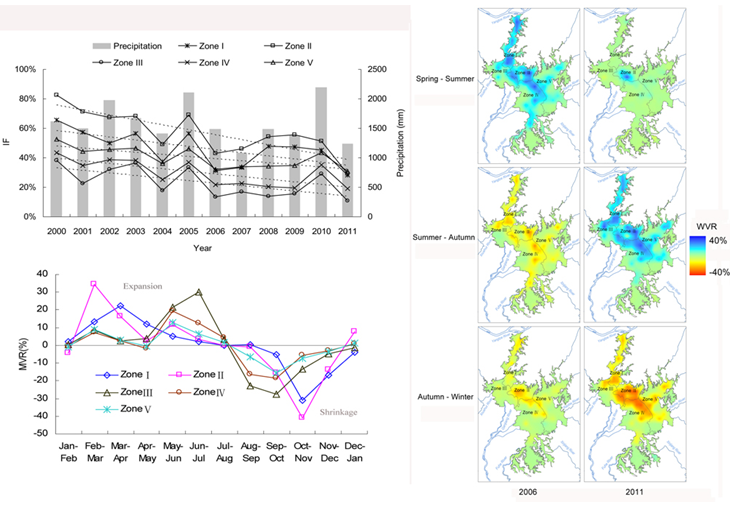Satellite-based detection of water surface variation in China’s largest freshwater lake in response to hydro-climatic drought
Poyang Lake, the largest freshwater lake in China, is an important water resource and iconic ecosystem in a region that has been subjected to extreme drought in recent years. The lake’s inundation area is heavily influenced by basin rainfall and also by the Yangtze River’s water flows. Exploring the lake’s inundation variation in response to drought conditions is of great importance for developing effective management planning for local water resources and for mitigating future drought. Here we demonstrate how satellites can reflect the lake’s inundation changes and processes under typical hydro-climatic droughts. Using Moderate Resolution Imaging Spectroradiometer (MODIS) medium-resolution data collected between 2000 and 2011, we documented the tempo-spatial variation characteristics of water inundation areas and two typical droughts in 2006 and 2011. 2006 was a hydrologic drought year, which occurred due to an abnormal change in the Yangtze River’s water flows. A dramatic shrinkage of the inundation area mainly occurred in autumn and winter. In contrast, 2011 was a hydro-climatic drought year, which resulted from the complicated influence of both the Poyang Lake basin and Yangtze River. The lake shrinkage appeared more severe during spring–summer, when about 70% of the inundation area disappeared before July. The results should be valuable for ecological conservation and water resource management in the Poyang Lake region.
The study was thought to contribute to the body of work that investigates the use of satellite data to study water resources at a time in our civilization that such knowledge was vital for our continued survival.

Full-text URL:
http://www.sciencedirect.com/science/article/pii/S0022169415000657
http://www.tandfonline.com/doi/abs/10.1080/01431161.2014.916444
